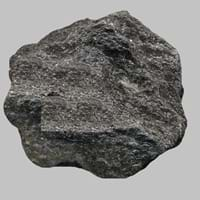Definition
A ganister is a hard, fine-grained quartzose sandstone or orthoquartzite which is basically used in the manufacture of silica brick typically used to line furnaces and is a type of sedimentary rocks.
Tuff is a type of rock made of volcanic ash ejected from a vent during a volcanic eruption
Discoverer
Unknown
Unknown
Etymology
From gan′is-ter i.e a hard, close-grained siliceous stone, often forming the stratum which underlies a coal-seam
From a Latin word tophous then in Italian tufo and finally tuff
Class
Sedimentary Rocks
Igneous Rocks
Sub-Class
Durable Rock, Hard Rock
Durable Rock, Medium Hardness Rock
Group
Not Applicable
Volcanic
Other Categories
Coarse Grained Rock, Fine Grained Rock, Opaque Rock
Fine Grained Rock, Opaque Rock
Texture
Clastic, Granular, Rough
Clastic, Pyroclastic
Color
Beige, Black, Brown, Colourless, Cream, Dark Brown, Green, Grey, Light Green, Light to Dark Grey, Pink, Red, White, Yellow
Brown, Grey, Yellow
Durability
Durable
Durable
Scratch Resistant
Yes
Yes
Appearance
Rough
Dull, Vesicular and Foilated
Interior Uses
Decorative Aggregates, Entryways, Flooring, Homes, Interior Decoration
Decorative Aggregates, Entryways, Flooring, Homes, Interior Decoration
Exterior Uses
As Building Stone, Garden Decoration, Office Buildings, Paving Stone
As Building Stone, As Facing Stone, Garden Decoration, Office Buildings, Paving Stone
Other Architectural Uses
Curbing
Curbing
Construction Industry
Cement Manufacture, Construction Aggregate, for Road Aggregate, Production of Glass and Ceramics, Raw material for the manufacture of mortar
Building houses or walls, Construction Aggregate
Medical Industry
Not Yet Used
Not Yet Used
Antiquity Uses
Artifacts, Monuments, Sculpture, Small Figurines
Artifacts, Monuments, Sculpture, Small Figurines
Commercial Uses
An Oil and Gas Reservoir, In aquifers, Petroleum reservoirs, Soil Conditioner, Source of Magnesia (MgO), Tombstones
Creating Artwork
Types
Not Available
Welded tuff, Rhyolitic tuff, Basaltic tuff, Trachyte tuff, Andesitic tuff and Ignimbrite.
Features
Available in Lots of Colors and Patterns, Generally rough to touch, Very fine grained rock
Always found as volcanic pipes over deep continental crust
Archaeological Significance
Famous Monuments
Data Not Available
Easter Island in the Polynesian Triangle, Pacific Ocean
Famous Sculptures
Data Not Available
Data Not Available
Pictographs
Not Used
Used
Petroglyphs
Not Used
Used
Formation
Ganisters are formed by the destruction of easily weathered minerals mainly feldspar, within the surface horizon of soil by soil-forming processes.
Tuff is formed when large masses of ash and sand which are mixed with hot gases are ejected by a volcano and avalanche rapidly down its slopes.
Mineral Content
Calcite, Clay, Clay Minerals, Feldspar, Micas, Quartz
Calcite, Chlorite
Compound Content
Aluminium Oxide, CaO, Iron(III) Oxide, Potassium Oxide, MgO, Sodium Oxide, Silicon Dioxide
Hydrogen Sulfide, Sulfur Dioxide
Types of Metamorphism
Not Applicable
Burial Metamorphism, Cataclastic Metamorphism, Contact Metamorphism, Hydrothermal Metamorphism, Impact Metamorphism, Regional Metamorphism
Types of Weathering
Biological Weathering
Biological Weathering, Chemical Weathering, Mechanical Weathering
Types of Erosion
Water Erosion, Wind Erosion
Chemical Erosion, Coastal Erosion, Glacier Erosion, Sea Erosion, Water Erosion, Wind Erosion
Grain Size
Coarse or Fine
Fine Grained
Fracture
Splintery
Uneven
Porosity
Highly Porous
Highly Porous
Luster
Dull
Vitreous to Dull
Cleavage
Perfect
Not Available
Toughness
2.6
Not Available
Specific Gravity
2.2-2.8
2.73
Transparency
Opaque
Opaque
Density
2.2-2.8 g/cm3
1-1.8 g/cm3
Resistance
Heat Resistant, Impact Resistant, Pressure Resistant
Heat Resistant, Impact Resistant, Pressure Resistant, Wear Resistant
Deposits in Eastern Continents
Asia
China, India, Kazakhstan, Mongolia, Russia, Uzbekistan
Afghanistan, Armenia, Azerbaijan, Burma, Cambodia, China, India, Indonesia, Iran, Japan, Malaysia, Mongolia, Nepal, North Korea, Pakistan, Saudi Arabia, Syria, Taiwan, Thailand, Turkey, Vietnam, Yemen
Africa
Namibia, Nigeria, South Africa
Cameroon, Cape Verde, Eritrea, Ethiopia, Kenya, Libya, Madagascar, Nigeria, Rwanda, South Africa, Sudan, Uganda
Europe
Austria, Denmark, Germany, Great Britain, Netherlands, Norway, Poland, Sweden, Switzerland, United Kingdom
France, Georgia, Germany, Greece, Iceland, Italy, Netherlands, Poland, Portugal, Spain, United Kingdom
Others
Greenland
Antarctica, Hawaii Islands
Deposits in Western Continents
North America
Canada, USA
Canada, Costa Rica, Panama, USA
South America
Brazil
Argentina, Bolivia, Brazil, Chile, Ecuador, Paraguay
Deposits in Oceania Continent
Australia
New South Wales, New Zealand
Central Australia, Western Australia
All about Ganister and Tuff Properties
Know all about Ganister and Tuff properties here. All properties of rocks are important as they define the type of rock and its application. Ganister belongs to Sedimentary Rocks while Tuff belongs to Igneous Rocks.Texture of Ganister is Clastic, Granular, Rough whereas that of Tuff is Clastic, Pyroclastic. Ganister appears Rough and Tuff appears Dull, Vesicular and Foilated. The luster of Ganister is dull while that of Tuff is vitreous to dull. Ganister and Tuff are available in beige, black, brown, colourless, cream, dark brown, green, grey, light green, light to dark grey, pink, red, white, yellow colors. The commercial uses of Ganister are an oil and gas reservoir, in aquifers, petroleum reservoirs, soil conditioner, source of magnesia (mgo), tombstones and that of Tuff are creating artwork.










